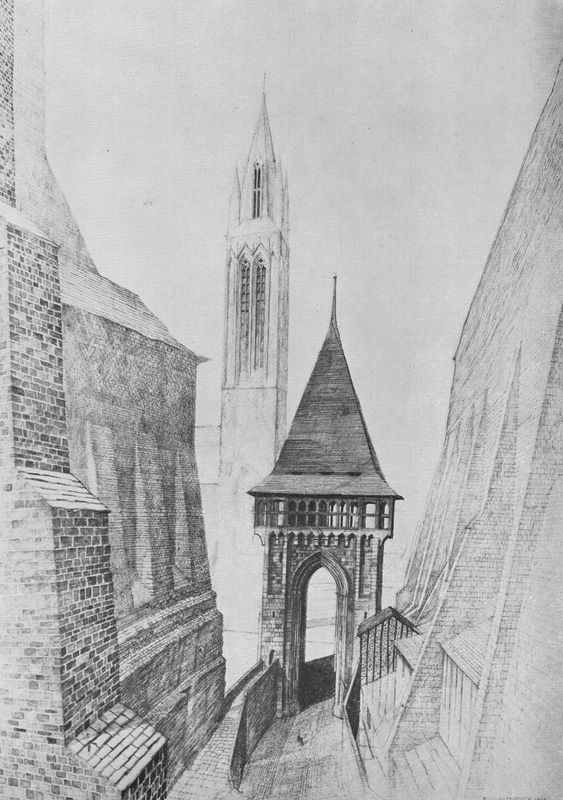Most of the last fortnight has been spent reading and writing on architectural photography in relation to Victorian church restoration, linking up with the other religious and aesthetic themes that are central to my thesis. After poring over old volumes of The Ecclesiologist and original letters from SPAB members, well-known classics such as Charles Eastlake’s History of the Gothic Revival and spirited protestations by William Morris, plus the usual mounds of secondary works and periodical literature, I derived a keen pleasure from these fifty year old drawings by Rodney Hubbuck.
Born in Hindhead, Surrey in 1940, Hubbuck developed his interest in architectural drawing while at school at Frensham Heights, a forward-thinking school in Farnham. After further training at Portsmouth School of Art (1957-61), he spent a few months as a prospective artist in the office of architects John Seely & Paul Edward Paget, before returning for further studies at the Bath Academy of Art at Corsham and then Brighton College of Art. He then took up the post of assistant art master at Bradford Grammar School.
His deep understanding of Victorian church architecture – both the structure and the history – is evident from these drawings; like most of his work, they appear to have been executed in soft lead pencil. The curious juxtapositions have an element of fantasy about them, while – to my mind – also offering a wry commentary upon the anachronistic work carried out by well-meaning Victorian restorers.
Hubbuck subsequently left Bradford to become a full-time artist, although he also occasionally wrote on architectural subjects: he co-authored with Nikolaus Pevsner the volume on Hampshire: Winchester and The North (1967) for the Buildings in England series, and published a pamphlet on Portsea Island Churches (1969, revised in 1976.) He now lives in Dorchester, where I’m going in a few days time. Sadly, I realised today that I’ve just missed an exhibition of his work that was being shown earlier this summer. In his masterly use of the pencil and profound grasp of architectural detail, his skill matches that of one of my other featured artists, Joseph Pike – but how different are their styles!


